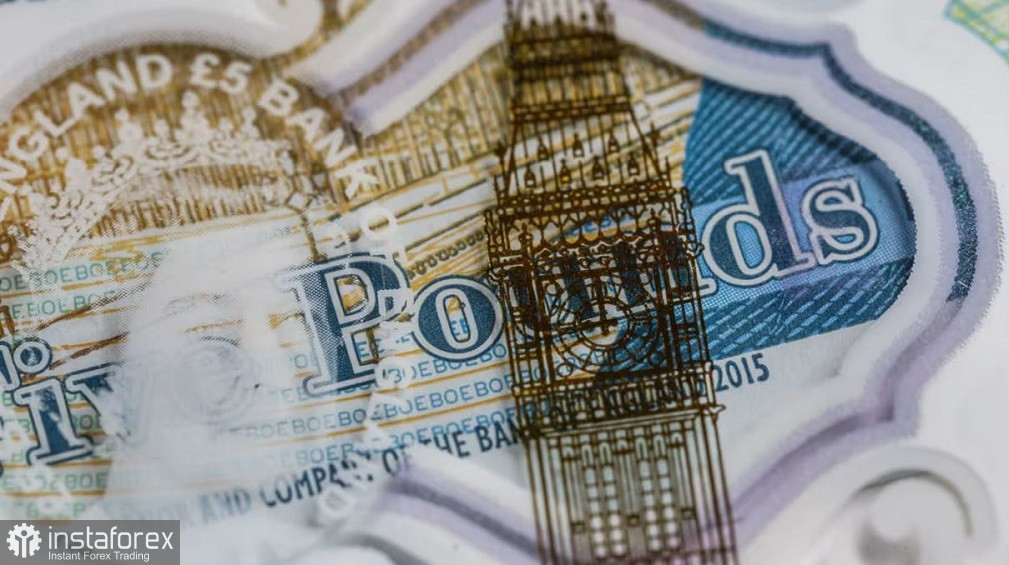The pound is under pressure against the dollar. At the beginning of November, the pair updated a seven-month price low, dropping to the bottom of the 30th figure for the first time since April of this year. Last week, buyers managed to recover some lost positions (due to a weakening of the greenback), but this week, sellers are counterattacking and trying to establish themselves below the support level of 1.3100 (the lower boundary of the Kumo cloud on the four-hour chart).

On the side of GBP/USD sellers are the British macroeconomic reports (which reflected a cooling labor market and weak economic growth in the UK), as well as growing confidence that the Federal Reserve will adopt a wait-and-see position at its December meeting.
In other words, the odds of the Bank of England lowering rates are increasing, while the chances of a rate cut by the Federal Reserve are decreasing. However, this could all change if the September Non-Farm Payrolls come in the red zone (data is expected on Thursday) and the UK inflation report comes in the green zone (scheduled for Wednesday, November 19).
That's why the next few days will be crucial for GBP/USD traders. Leading up to such significant events, the pair has settled into a drift within the range of 1.3130-1.3190.
According to preliminary forecasts, the overall consumer price index in October is expected to accelerate, from zero to 0.4% month-on-month. Year-on-year, the figure is expected to slow to 3.4%. This is the lowest level for the indicator since May of this year. The core CPI, excluding energy and food prices, is also expected to slow to 3.4%. This indicator has been decreasing for two months, and October will likely mark the third consecutive month in this trend.
The Retail Price Index (RPI), used by employers in wage discussions, is expected to slow to 4.3%, after rising to 4.5% last month. A downward trend is also forming here—in August, the figure fell to 4.6%, and in September, it dropped to 4.5%.
As we can see, preliminary forecasts are not favorable to the British currency. If these indicators fall short of the projected levels, the likelihood of a rate cut at the next BoE meeting will increase again, putting additional pressure on the pound.
Indeed, inflation is the last piece of the puzzle that could complete the fundamental picture for the pound. Previously published data on the UK labor market and GDP growth came in the red zone, reinforcing "dovish" expectations regarding the BoE's future actions.
To remind, according to the latest data, the UK's unemployment rate rose to 5.0%, the highest level since January 2021. The number of applications for unemployment benefits rose by 29,000 in October (forecasted at +20,000). This is the worst result since July 2024. The wage component of the report also disappointed GBP/USD buyers. Average earnings (including bonuses) rose by 4.8%, whereas the forecast was at 4.9%. Excluding bonuses, the wage figure slowed to 4.6%—the lowest level since June 2022. This indicator has been consistently declining since March of this year.
Traders were also disappointed by the latest data on UK economic growth for the third quarter. On a monthly basis, GDP shrank by 0.1%—the first negative figure since May of this year. Quarterly growth was only 0.1%. Both components of the report fell into the red zone (most analysts expected these figures to be 0.0% m/m and 0.2% q/q).
Industrial output decreased by 2.0% m/m, while the forecast was for a -0.2% decline. This is a true record low—the lowest level since May 2020. Year-on-year, the indicator plummeted to -2.5% (forecast: -1.2%). This is also a multi-month record low—the worst result since March 2023. Manufacturing output also fell (-1.7% m/m, -2.2% y/y). The services activity index, a key macroeconomic indicator, rose only 0.2% m/m. This index has been declining consistently since April of this year.
Therefore, if the UK inflation report is released at least at the projected level (not to mention in the "red zone"), the market will start discussing the prospects of the BoE lowering the interest rate in December again. The probability of a "dovish" scenario could rise to 80-90%, given the ambiguous results of the November meeting (when four of the nine committee members voted for a rate cut). Such an outcome would exert significant pressure on the pound.
However, if inflation unexpectedly accelerates relative to forecasts, the momentum could reverse. The pair may not only break through the resistance level of 1.3190 (the middle line of the Bollinger Bands indicator on the daily chart) but also test the next price barrier at 1.3250 (the Kijun-sen line on the same timeframe).
The intrigue remains, making it prudent to maintain a wait-and-see position for the GBP/USD pair—both buying and selling are equally risky at this time.
 English
English 
 Русский
Русский Bahasa Indonesia
Bahasa Indonesia Bahasa Malay
Bahasa Malay ไทย
ไทย Español
Español Deutsch
Deutsch Български
Български Français
Français Tiếng Việt
Tiếng Việt 中文
中文 বাংলা
বাংলা हिन्दी
हिन्दी Čeština
Čeština Українська
Українська Română
Română

